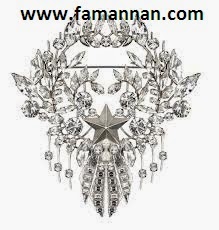Egypt Women Fashion Wedding Choice Jewelry.
.jpg)
.jpg)
.jpg)
.jpg)
By Aamir Mannan.
.jpg)
Ancient Egyptian jewelry is among some of the most rare and exquisite pieces of ancient history every found. Both men and women wore the Ancient Egyptian jewelry, and these personal adornments were not just limited to beaded necklaces and finger rings. Jewelry such as anklets, collars, bracelets, fillets and earrings embodied everyday Egyptian dress, so much so, that even in death the poorest of individuals would still be found wearing a string of beads or a simple bracelet.
.jpg)
Excavations and grave robbing in the Saqqara Necropolis has turned up loose beads and trinkets from the mass graves and tombs of the ancient Egyptians. In fact, these loose beads are often picked up by local merchants and sold to gullible tourists, unaware that they just purchased a piece of ancient history.
.jpg)
Why the Ancient Egyptians Wore Jewelry?
The Ancient Egyptians wore the ornamental jewelry for many reasons, however the more fundamental reason and purpose was to guard them from mysterious hostile forces. For many of us, we sometimes require the assistance of a necklace with a teardrop crystal, a tiger’s eye, a rabbit’s foot, an organically made bracelet fashioned out of hemp, or a type of precious stone to make us feel safe. The Ancient
.jpg)
Egyptians exhibited this same action, only most of the adornments worn were crafted out of stone. Such talismans might consist of turquoise and lapis lazuli and carnelian, all representing a facet of nature such as the green of spring, the blue of the sky, or the orange or beige of the desert.
.jpg)
.jpg)
.gif)
.jpg)
.jpg)
.jpg)
.jpg)
.gif)
.jpg)
.jpg)
.jpg)
.jpg)
.jpg)
.jpg)
.jpg)
.jpg)
.jpg)
.jpg)
.jpg)
.jpg)
.jpg)
.jpg)
.jpg)
.jpg)
.png)
.jpg)
.jpg)
.jpg)
.jpg)
.jpg)
.jpg)
.jpg)
.JPG)
.jpg)
.jpg)
.jpg)
.jpg)
.jpg)
.jpg)

.jpg)
.jpg)
.jpg)
.jpg)
.jpg)
.jpg)


